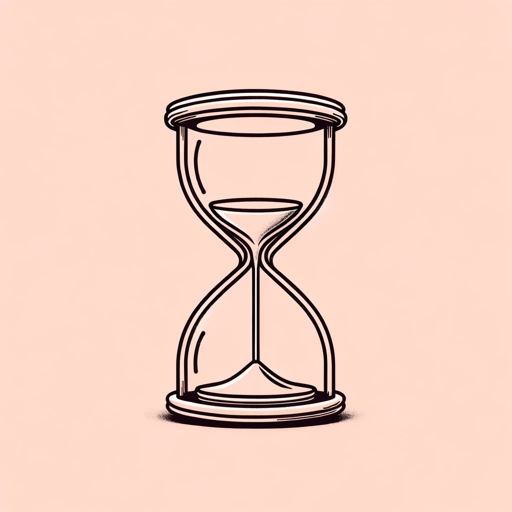30 pages • 1 hour read
F. Scott FitzgeraldThe Curious Case of Benjamin Button
Fiction | Short Story | Adult | Published in 1922A modern alternative to SparkNotes and CliffsNotes, SuperSummary offers high-quality Study Guides with detailed chapter summaries and analysis of major themes, characters, and more.
Summary and Study Guide
Summary: “The Curious Case of Benjamin Button”
“The Curious Case of Benjamin Button” is a short story by American author F. Scott Fitzgerald (1896-1940) addressing themes of time, aging, social class, and destiny. Fitzgerald is among the most celebrated American authors of the 20th century. His novels The Great Gatsby and Tender Is the Night, though commercial disappointments in his lifetime, are now considered classics.
Remembered today primarily as a novelist, Fitzgerald was known as a short story writer for magazines by contemporary readers. “Benjamin Button” originally appeared in Collier’s before being collected in Tales of the Jazz Age alongside his well-known story “The Diamond as Big as the Ritz.” Both works belong to the fantasy genre of literature. In “Benjamin Button,” a man is born elderly and ages in reverse until he ends his life as an infant. This conceit frames a bittersweet exploration of the process through which familial and societal roles change beyond one’s control. In 2008, the story was adapted into an Academy Award-winning film that maintained the central concept and themes of Fitzgerald’s tale while altering the historical setting and most of the plot details.
This guide refers to the version of the story that appears in the 2002 Cambridge edition of Tales of the Jazz Age edited by James L. W. West III, which includes Fitzgerald’s annotated Table of Contents in which he provides humorous introductions to each story.
The story begins with a matter-of-fact narrator relating the circumstances of Benjamin Button’s birth. The year is 1860, and Mr. and Mrs. Roger Button, a well-to-do couple in Baltimore, are having their first child. On the way to the hospital to meet his son, Mr. Button encounters a doctor and nurses who seem flustered and won’t give him information about the birth. Now nervous, he is pointed to a crib where he sees “an old man apparently about seventy years of age” with white hair and a long beard (172). The baby and the father are both perplexed, and Mr. Button is angry with the hospital staff who inform him he must take the baby home. The father is preoccupied with concerns about how he’ll be perceived if he leaves with the man wrapped in blankets and decides to buy him clothes.
Despite his son’s aged appearance and height of five feet eight inches, Mr. Button is determined to treat Benjamin like a baby. He feeds him warm milk and gives him a rattle and stuffed animals to play with despite catching Benjamin smoking a cigar. Benjamin doesn’t get along with other children and prefers spending time with his grandfather, whom he resembles. At age five, he enters kindergarten but isn’t interested in the activities.
As the years pass, Benjamin notices “the network of wrinkles on his face becoming less pronounced” and his skin becoming “heathier and firmer” (178). The family realizes that he will not remain an old man forever. Rather, he is growing younger.
At age 18, Benjamin enrolls at Yale College. When he meets the registrar, he is mistaken for his own father. The registrar refuses to believe he is a college freshman and expels him. His removal causes a scene, and as he walks away from campus, other students taunt him. In his humiliation, he vows that one day he will exact revenge by attending rival school Harvard.
When Benjamin is 20 and his father is 50, they appear to be about the same age; the narrator notes they “could have passed for brothers” (181). They attend a dance together where Benjamin sees a beautiful young woman named Hildegarde Moncrief. He is smitten and asks for a dance. Hildegarde believes Benjamin to be 50 years old and, as she claims to prefer older men, Benjamin lets her believe it. When they announce their engagement, members of Baltimore society comment on their apparent age disparity, believing Hildegarde to be marrying a much older man.
Benjamin joins his father’s wholesale hardware business, where he proves to be a great success; he becomes wealthy enough to own the first automobile in Baltimore. As he grows younger, he finds himself “becoming more and more attracted by the gay side of life” (186). Meanwhile, his wife, now a mother of their teenage son, is becoming older and less attractive to him.
In 1898, he joins the army to fight in the Spanish-American War and climbs the ranks to lieutenant colonel. Returning from the war, his aging process increasingly distresses him. The narrator says, “His destiny seemed to him awful, incredible” (187). Hildegarde is upset with him, accusing him of growing younger from a lack of pride. In a reversal of the society gossip at the time of his marriage, people now comment on the age disparity between the energetic young man and his much older wife. More concerned with dancing than working, he hands over his business to his college-aged son Roscoe, whom he now resembles.
In 1910, Benjamin fulfills his promise to enroll at Harvard, where he becomes a football star in his freshman year and defeats Yale. But each season he becomes smaller, and by his senior year, he doesn’t make the football team at all. After graduating, he returns to Baltimore, where his son has become prominent in Baltimore society. Roscoe is embarrassed by his teenage-looking father and insists that Benjamin call him “Uncle” (190).
America enters World War I. Benjamin, who is now 57, wishes that he could enlist. He receives a letter informing him that in honor of his service in the Spanish-American War, he is now being commissioned as a brigadier general. When he reports for duty, a sentry calls him “sonny” and doesn’t believe he’s there to serve. He encounters a colonel who assumes he must have stolen the letter naming him a general and takes him to a headquarters, where Roscoe angrily arrives to bring him home to Baltimore.
In 1920, Roscoe’s first child is born, but the family keeps Benjamin—who now appears to be 10 years old—at a distance. When Roscoe’s son turns five, he becomes Benjamin’s playmate in a reversal of the grandfather-grandchild relationship Benjamin enjoyed with his own grandfather. They enter kindergarten together, and the activities that once bored Benjamin now fascinate him. While his grandchild moves on to first grade, Benjamin remains behind.
After two more years, Benjamin is removed from kindergarten and placed in the care of a nurse he calls Nana. She teaches him words, and he plays toddler games. As he grows younger and younger, his memories drift away. His awareness wanes as he progresses into infancy until, finally, “it was all dark, and his white crib and the dim faces that moved above him, and the warm sweet aroma of the milk, faded out altogether from his mind” (195).
Related Titles
By F. Scott Fitzgerald

Babylon Revisited
F. Scott Fitzgerald

Bernice Bobs Her Hair
F. Scott Fitzgerald

Crazy Sunday
F. Scott Fitzgerald

May Day
F. Scott Fitzgerald

Tender Is the Night
F. Scott Fitzgerald

The Beautiful and Damned
F. Scott Fitzgerald

The Diamond as Big as the Ritz
F. Scott Fitzgerald

The Great Gatsby
F. Scott Fitzgerald

The Last Tycoon
F. Scott Fitzgerald

This Side of Paradise
F. Scott Fitzgerald

Winter Dreams
F. Scott Fitzgerald

